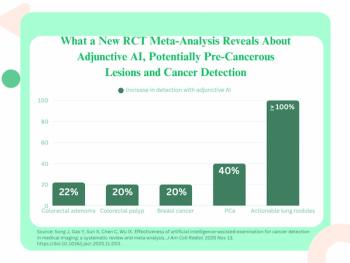
Siemens receives 'one-of-a-kind' grant for ultrasound research
Funding aims to develop advanced interfaceThe National Cancer Institute (NCI), long a partner of small U.S. businesses, has awarded a two-year grant of nearly $2 million to imaging giant Siemens, in hopes of advancing ultrasound
Funding aims to develop advanced interface
The National Cancer Institute (NCI), long a partner of small U.S. businesses, has awarded a two-year grant of nearly $2 million to imaging giant Siemens, in hopes of advancing ultrasound research.
The grant, which an NCI official called "one of a kind," is intended to help Siemens develop a software interface and user manuals for its Sonoline Antares platform that would give researchers the same access to the system's advanced capabilities that its corporate R&D group has. If Siemens is successful, the interface could be migrated to other products, the company said.
"The research interface will make it easier for researchers to control, monitor, and replicate key system settings, such as frame rate and receive aperture size, without arranging special support from the engineering department of the manufacturer," said Levin Nock, a senior staff scientist with Siemens. "It also will help researchers control the scanner setup on a frame-by-frame basis while offering access to digital radio-frequency data after it has been acquired by the transducer and passed through the beamformer."
John Pavlidis, president of Siemens' ultrasound division, compared the interface to a tool kit that allows the operator to manipulate a wide range of scanning parameters.
"This is special software that gives access to system functionality that is normally hidden from the user," Pavlidis said. "Currently, a researcher indicates he would like to do x, y, and z and asks whether we can modify our system to let him do that. There's a lot of back and forth involving industry, R&D groups, and, for example, a university, which wastes a tremendous amount of time."
NCI has a long history of offering grants to businesses. The institute pumped more than $71 million into industry last year alone. These grants, however, were made through its Small Business Innovation Research (SBIR) program. The companies that receive the grants typically have limited funds and are located in the U.S. Siemens fits neither criterion, which is one reason Laurence Clarke, chief of NCI's imaging technology development branch, biomedical imaging program, described the grant as unique. Another is the research community's need to develop an ultrasound interface.
"The prime motivation for this came from the research community, which told us that most of the ultrasound companies did not have a research interface," Clarke said. "In terms of providing a contract for industry to disseminate to the imaging community, this was the first of its kind."
Pavlidis believes that federal funding is warranted because the market for the planned interface is small and it would not otherwise be developed. It is a tool from which researchers everywhere could benefit, he said. Additionally, researchers might modify the interface for use on equipment other than Siemens' ultrasound scanners. The technology could conceivably be integrated into equipment made by the vendor's competitors.
During the first 12 to 18 months, Siemens will use the funds to develop software and generate the user manuals. Later, it will join forces with the University of Rochester in New York and Duke University in Durham, NC, to evaluate and complete the software. The end result is expected to be a commercially available package.
According to the NCI, Siemens was selected in large part because of its ultrasound expertise and its capability of developing an interface that could ultimately result in cancer detection applications. The company applied for the grant before its merger with ultrasound vendor Acuson, Pavlidis said.
Newsletter
Stay at the forefront of radiology with the Diagnostic Imaging newsletter, delivering the latest news, clinical insights, and imaging advancements for today’s radiologists.


























